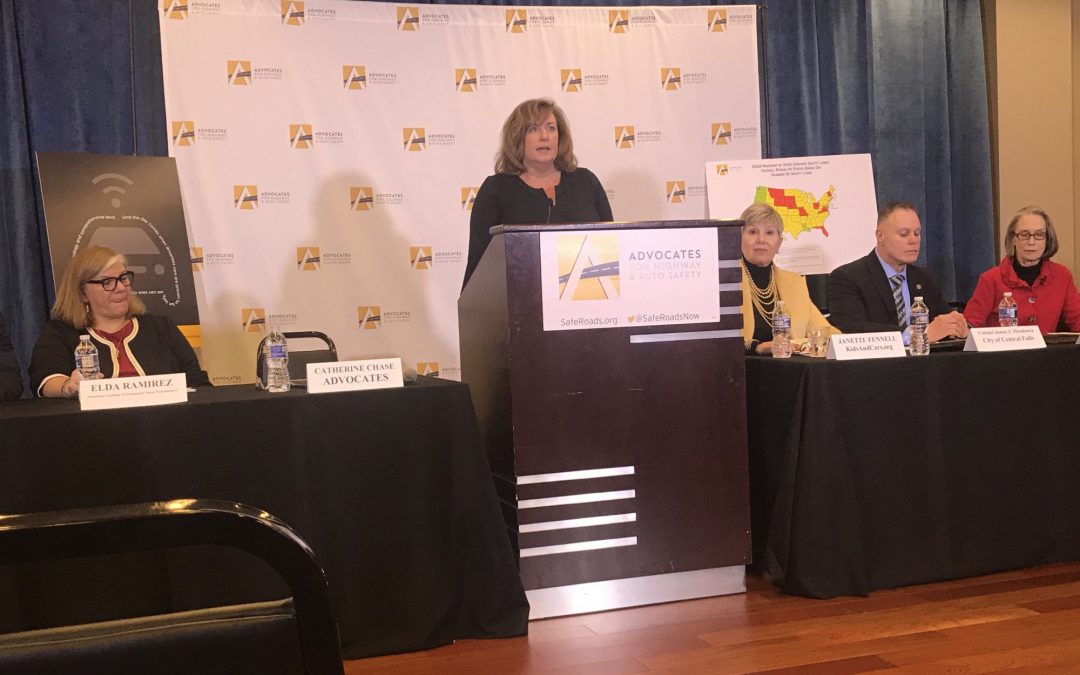WASHINGTON – Forty-three of the 50 states have failed to meet optimal traffic safety laws, according to a report released Tuesday by a highway safety group.
The Advocates for Highway and Auto Safety, an alliance between insurance companies and consumer, medical and public safety groups, highlights 16 laws as “fundamental” to safe driving. It notes that while six states and Washington, D.C., are in the “green” zone, none of the 50 states or D.C. has adopted all 16. The policy suggestions cover child passengers and other occupants, teen drivers, impaired driving and distracted driving.
States need to meet recommendations to prevent motor vehicle deaths and injuries, but instead are “mired in mediocrity,” Advocates President Catherine Chase said at a conference Tuesday.
Rhode Island, with 13 of 16 recommendations in place, was the “best” state for traffic safety laws. South Dakota was ranked “worst” for legislation, having passed just two laws of the 16 recommended. In that state, texting while driving and not wearing a seatbelt are both secondary offenses; violators can only be pulled over if they are committing other simultaneous primary offenses.
A spokesman for the South Dakota Department of Public Safety wrote in an email that it is “involved in many educational and promotional efforts designed to encourage the use of seatbelts… to obey all rules of the road, to not become distracted by electronic devices while driving and to not drink and drive.”
“Whether it is through monthly sobriety checkpoints,” continued the representative, “or the use of a character named Jim Reaper to encourage people to buckle up, we are working to keep people safe.”
Stricter seatbelt laws are the group’s first line of defense in protecting vehicle occupants. A 2005 study by the Journal of Safety Research found that switching from secondary to primary enforcement of seatbelt laws lowered driver deaths by 7 percent. Under primary enforcement, drivers can immediately be stopped and ticketed for breaking the law, while under secondary, drivers can be cited only after being pulled over for a separate, primary offense.
The report also proposes more tech-heavy rules, such as requiring ignition interlock devices be used for all drunk driving offenders. The devices, essentially breathalyzers fitted onto cars, requires breath samples before the car can be started. To prevent anyone other than the driver from providing samples, the device asks for samples while driving. If the driver fails, the car will begin flashing its lights or honking its horn until the driver turns the ignition off; the device cannot safely turn off the car engine itself.
Automated enforcement, like red light and speed cameras, and driver assistance technology, including lane departure warnings and blind spot detection, may also help reduce traffic deaths and related economic costs.
The reluctance to pass tougher traffic safety laws may extend from opponents’ anti-regulation sentiments. Advocates President Catherine Chase alluded to this when she described motorcyclists and drivers chafing at government involvement.
“Their mantra is, ‘Let those who ride decide,” while we respond, ‘Let those who pay have a say,’” said Chase. “Because when they’re in crashes, it affects everyone’s bottom line.”
Traffic accidents cost the economy $277 billion in one year, according to 2015 data from the National Highway Traffic Safety Administration. Vehicle crashes cost an additional $594 billion in harm from loss of life and decreased quality of life.


